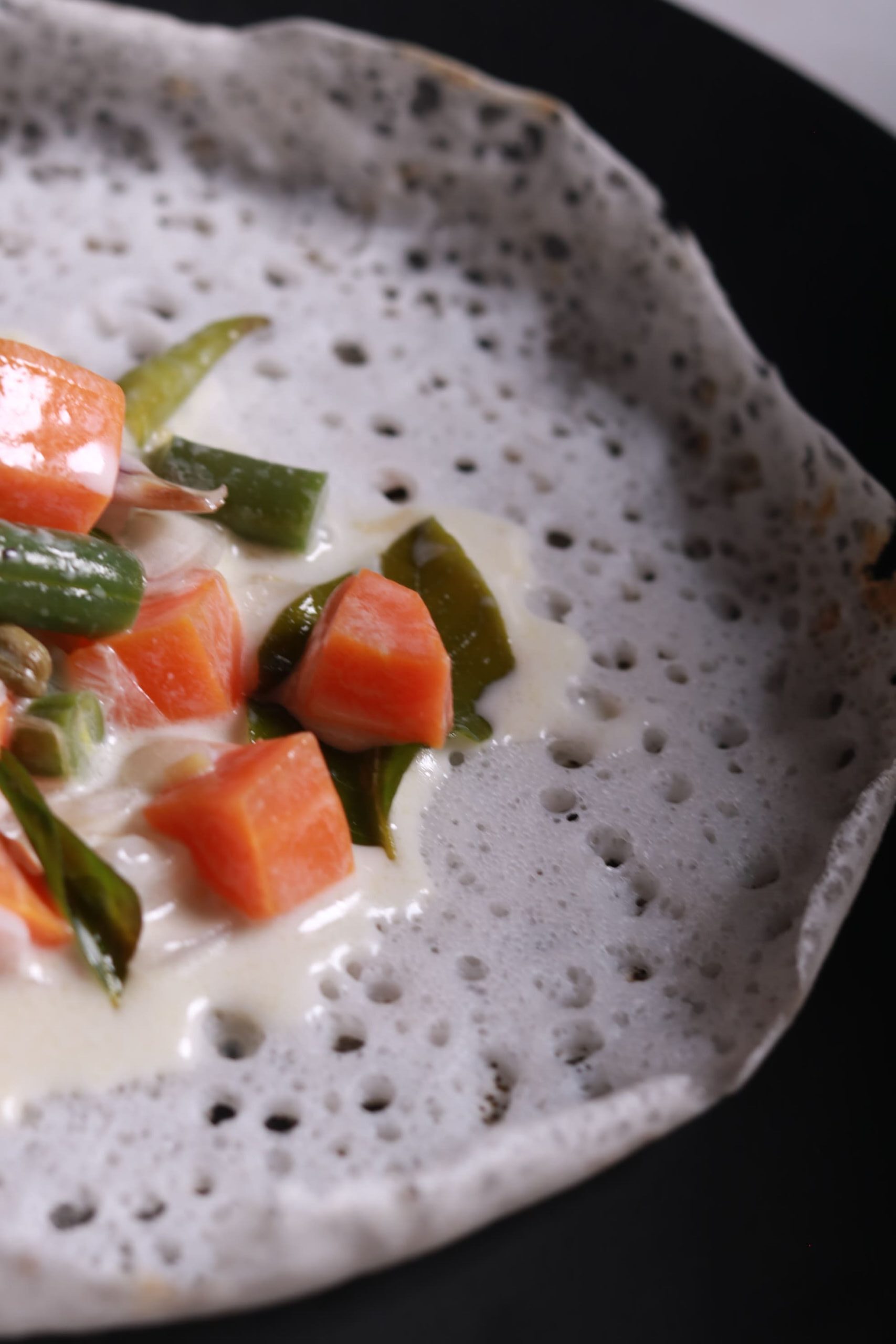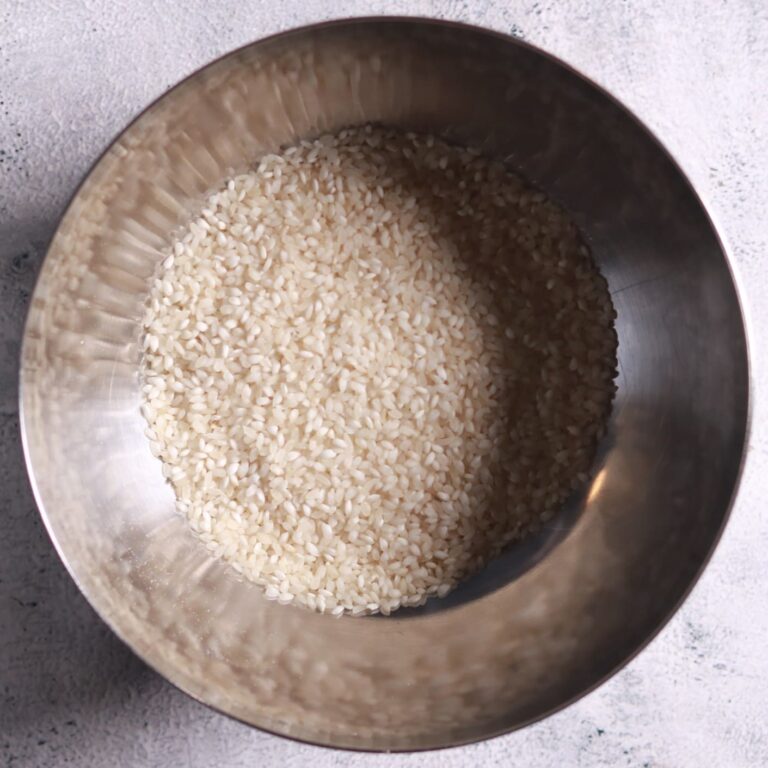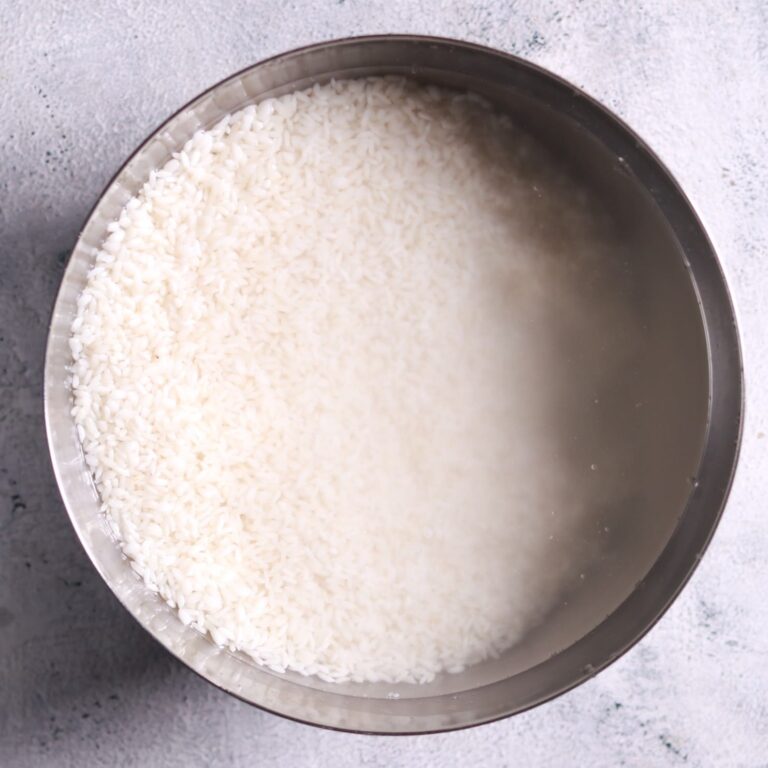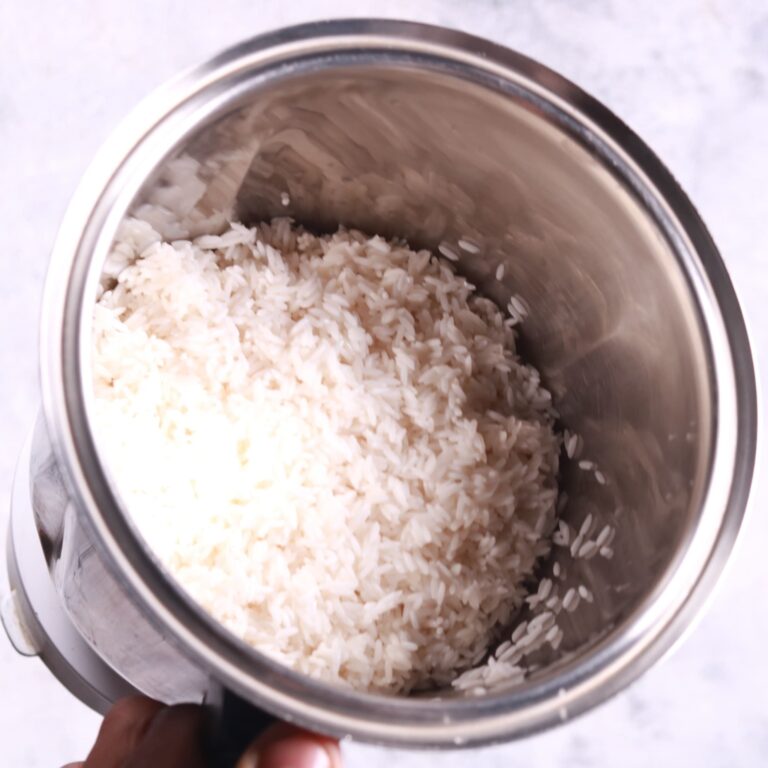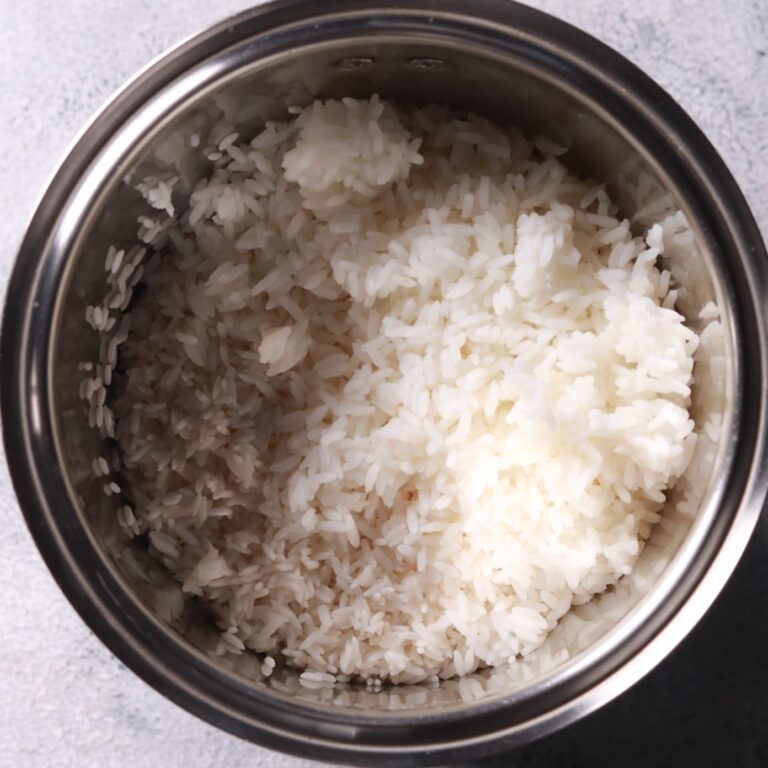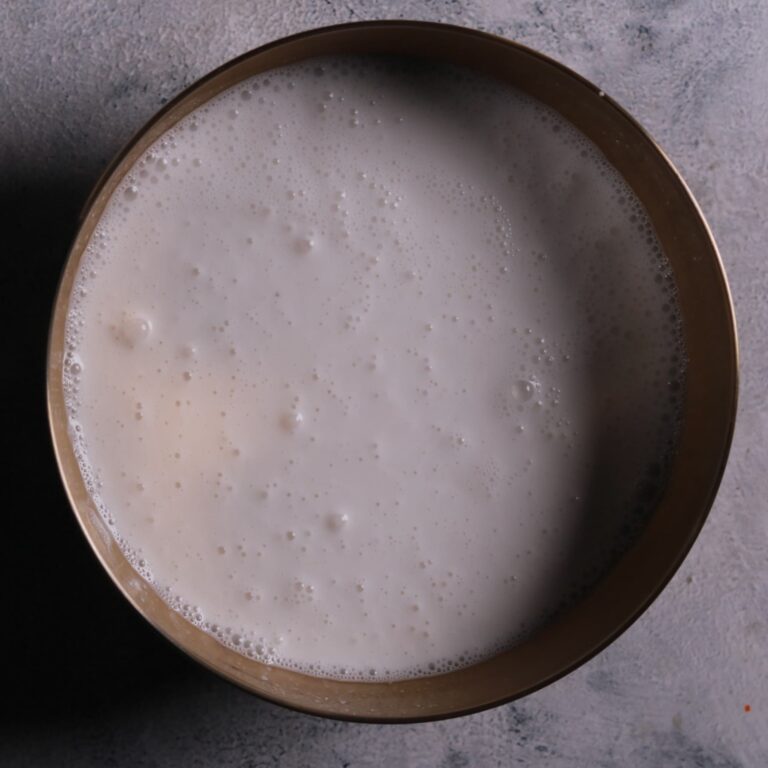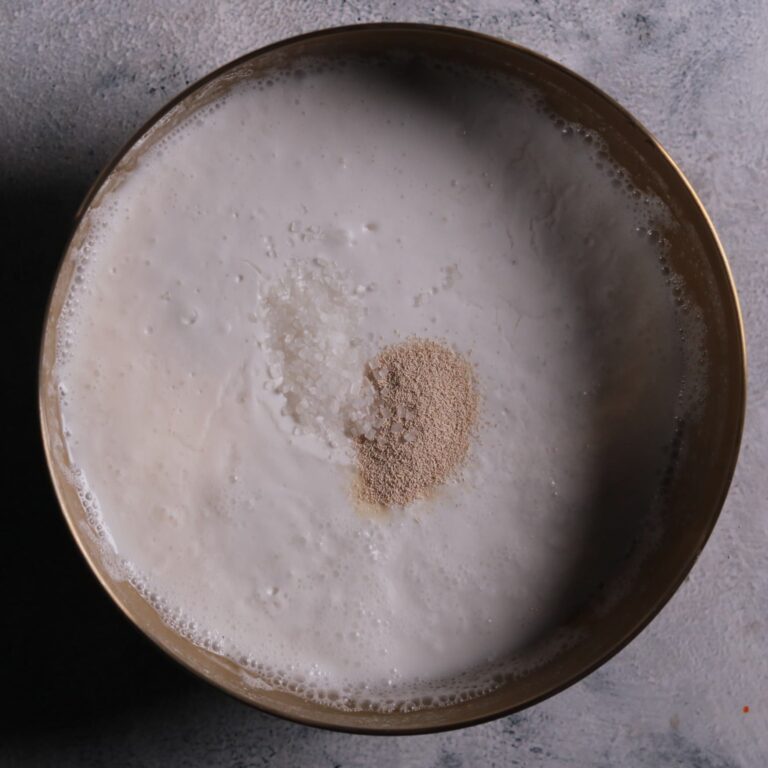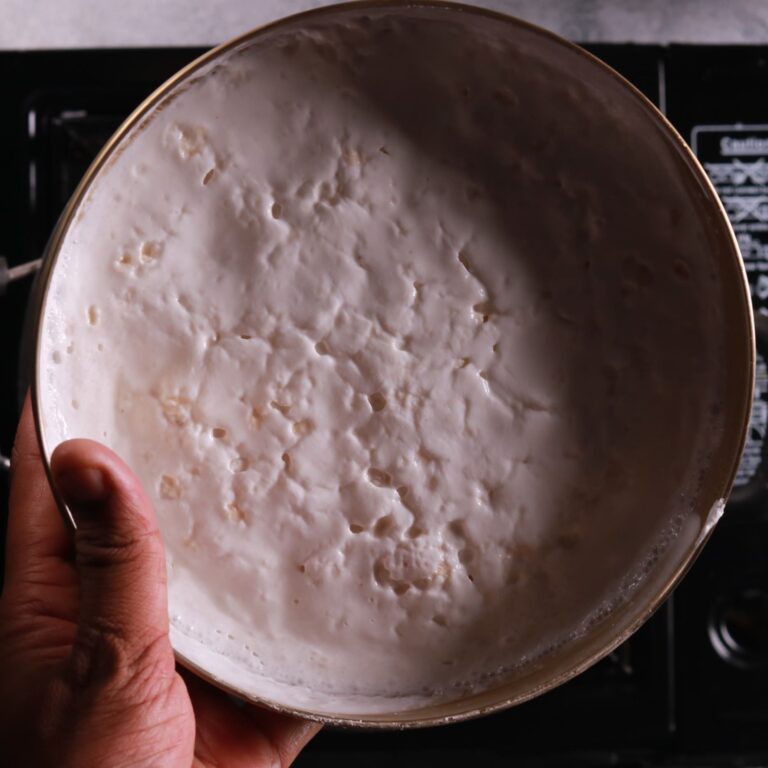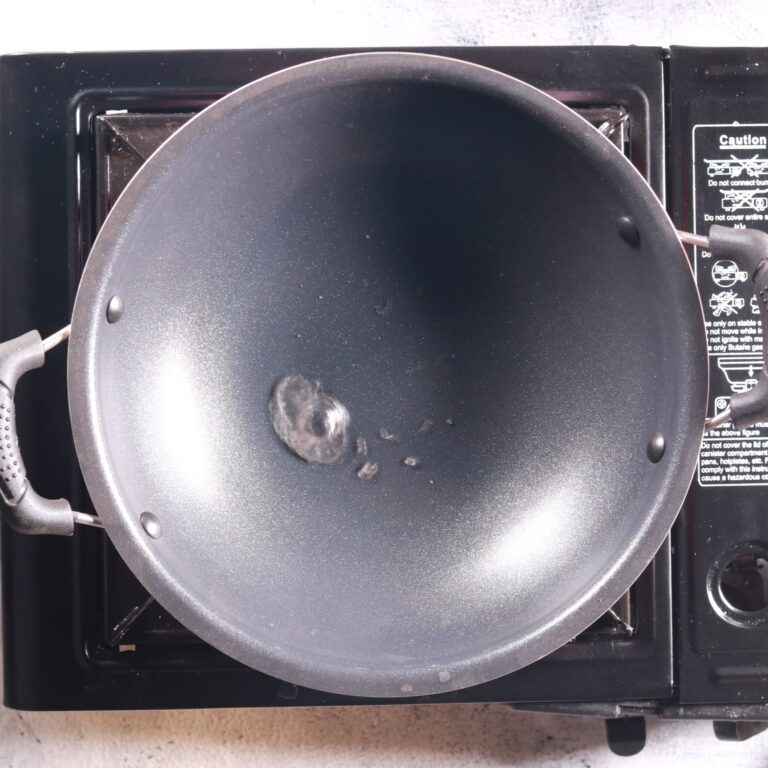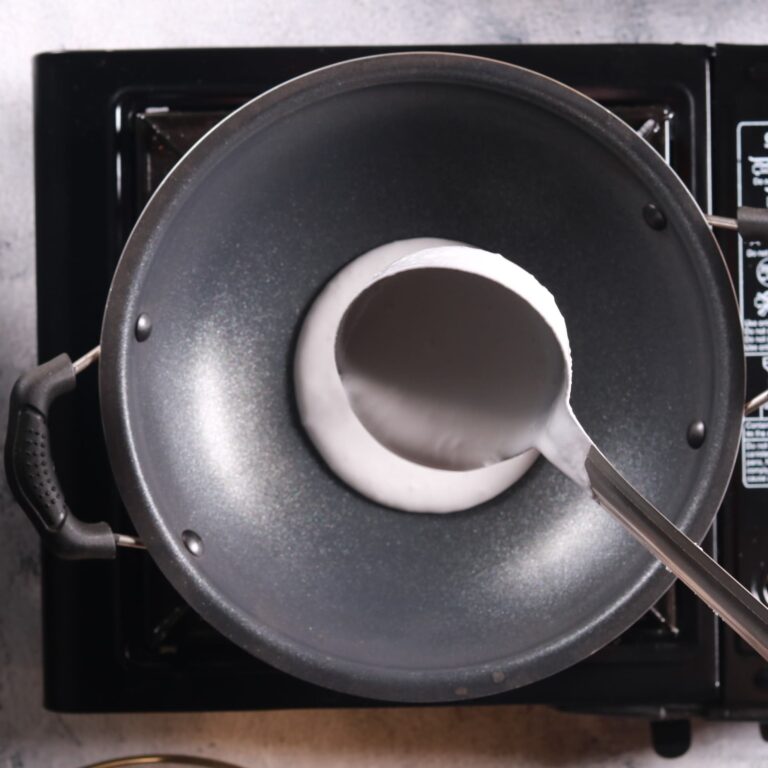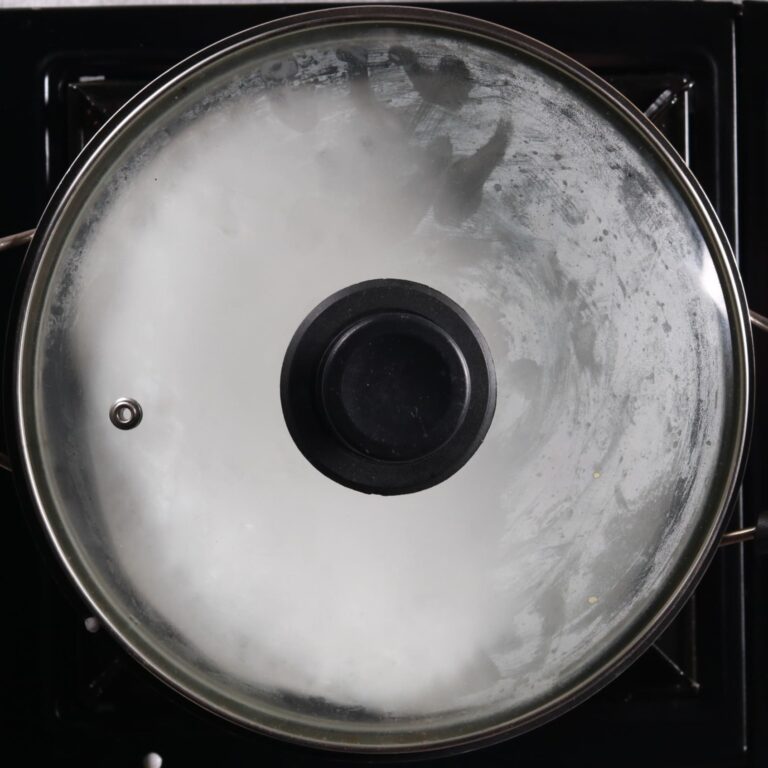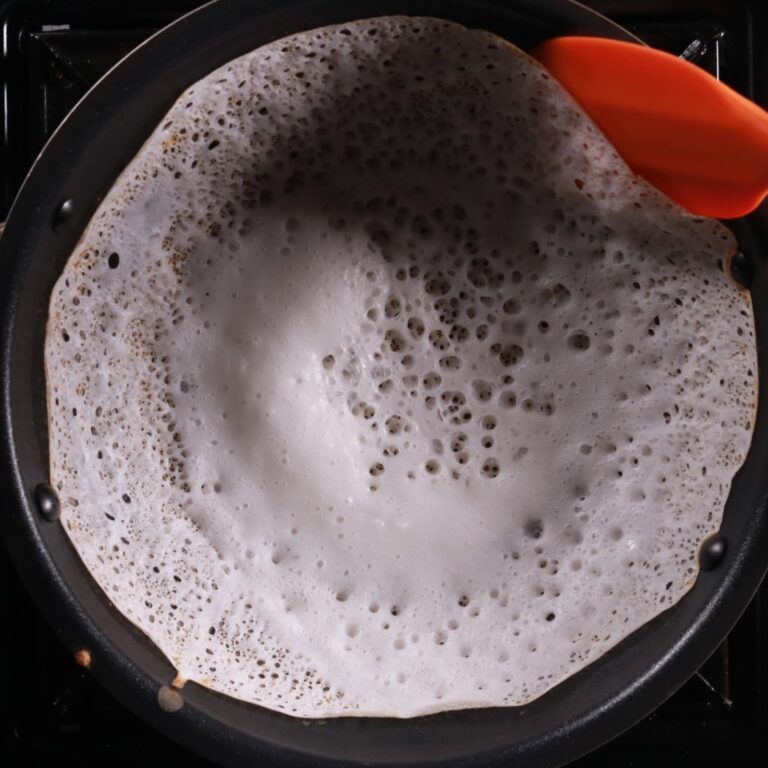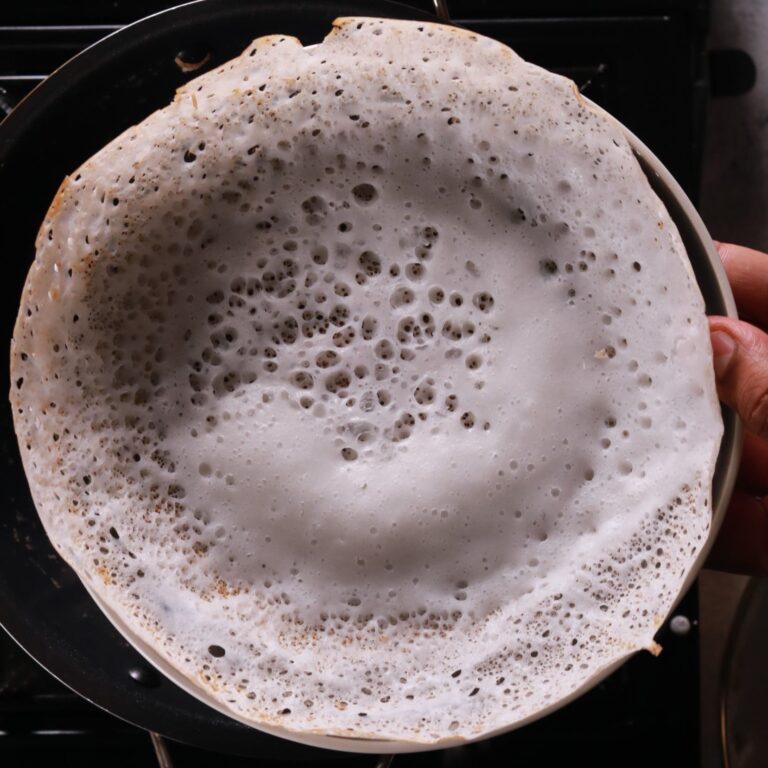If you’ve ever wandered through the bustling streets of Kerala or Tamil Nadu in the early morning, you’ve probably caught a whiff of something warm, slightly sweet, and utterly inviting. That’s appam, it is a delicious South Indian breakfast classic. Appam is a soft, lacy rice pancake with a pillowy centre and crisp, golden edges. It’s the kind of breakfast that makes you want to linger at the table, maybe with a second cup of chai, and definitely with a generous bowl of coconut milk or spicy stew on the side..
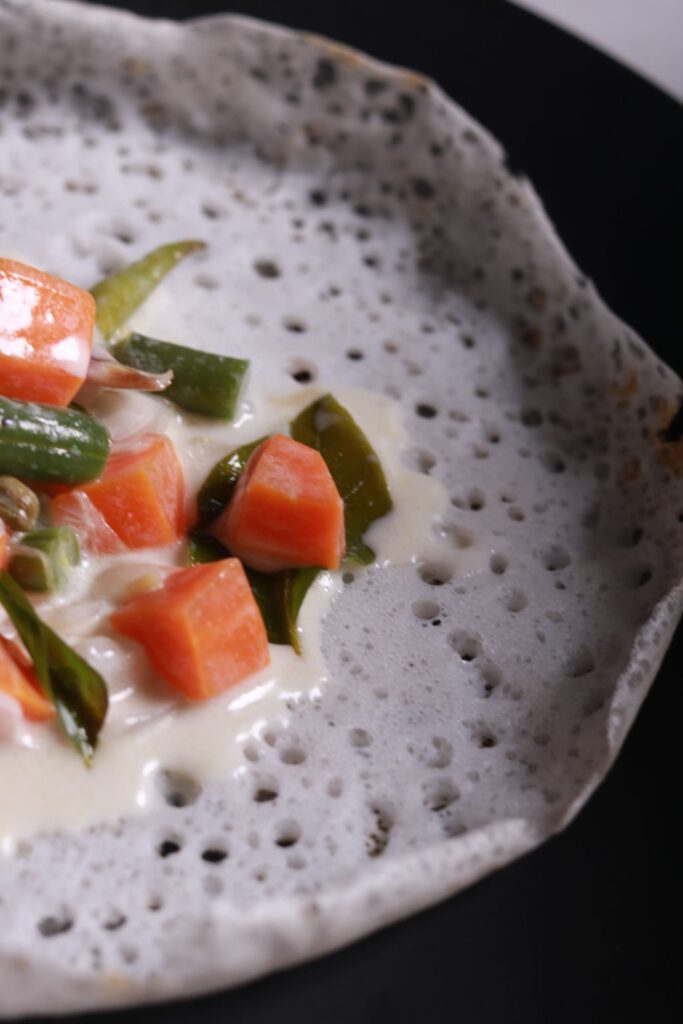
More South Indian Dishes
- Kerala Paratha: A Flaky South Indian Delicacy
- Authentic Kerala Chicken Stew Recipe
- Mutton Pepper Fry (Mutton Sukka): A Spicy South Indian Delicacy
- Kerala Prawn Fry Recipe | केरला प्रॉस फ्राई : Simply Delicious!
What is Appam
The word “appam” may come from the Sanskrit word apupa, meaning “fried dainty” or “rice cake,” and it’s mentioned in ancient Tamil literature, showing its long-standing presence in South Indian cuisine
Traditionally, it’s made from a fermented rice batter, giving it a gentle tang and a light, airy texture. It’s naturally gluten-free, vegan, and surprisingly simple to make at home with just a handful of ingredients. Whether you’re reminiscing about your last trip to South India or just looking to jazz up your breakfast routine, homemade appam is sure to become a new favourite
Ingredients for Authentic Appam
Let’s walk through what goes into making the perfect appam. The ingredient list is refreshingly short, but each one plays a starring role.
- Raw Rice: This is the backbone of the recipe. Short or medium-grain raw rice works best, giving the appam its signature soft and spongy texture. Avoid parboiled or basmati rice; they’ll throw off the delicate balance.
- Cooked Rice: Here’s the secret to that tender, fluffy center! A small handful of cooked rice helps the batter ferment beautifully and adds softness.
- Water: Used for both soaking and grinding, water helps create a smooth, pourable batter.
- Sugar: Just a tablespoon is enough to feed the yeast and give the appam a subtle sweetness.
- Dry Yeast: This speeds up fermentation, especially if your kitchen is a bit chilly. If you’re a purist, you can skip it and let the batter ferment naturally overnight.
- Salt: Added after fermentation, salt balances the flavors and brings everything together.
Each ingredient has a purpose: the rice forms the base, the cooked rice ensures softness, yeast (or natural fermentation) gives rise and tang, and sugar and salt round out the flavor. Simple, but magical.
Home Made Appam: Photos
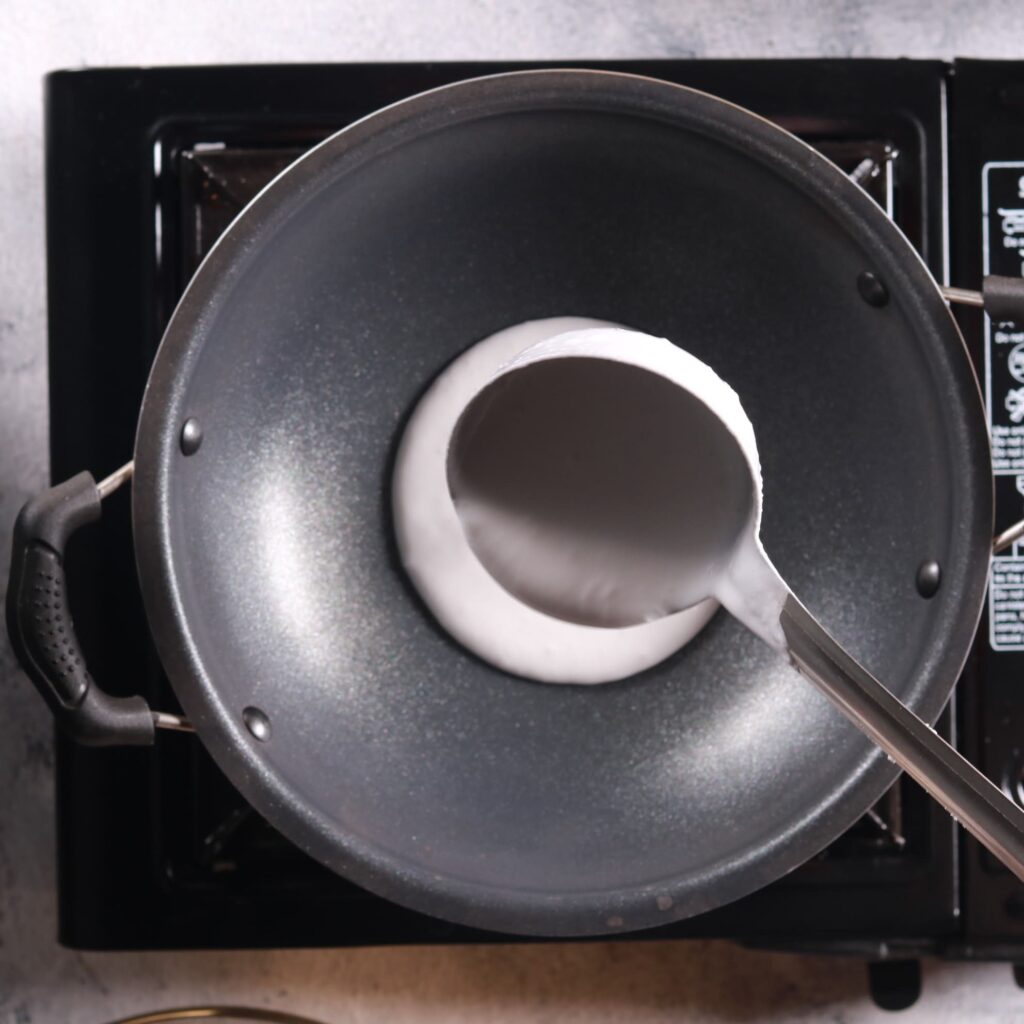




Tips for Perfect Appam Every Time
Making appam isn’t complicated, but a few simple tips can make all the difference:
- Rice Matters: Stick with short or medium-grain raw rice for that authentic texture. Parboiled or basmati rice just won’t give you the same results.
- Batter Consistency: The batter should be thinner than dosa batter, almost like buttermilk. If it’s too thick after fermentation, stir in a little more water.
- Fermentation: If your kitchen is cool, the yeast will help speed things up. In warm climates, natural fermentation works beautifully, just allow a bit more time.
- Visual Cues: The appam is ready when the edges are golden and lacy, and the centre looks set and spongy.
- Storage: Fermented batter keeps well in the fridge for up to two days. Bring it to room temperature before cooking for the fluffiest appams.
Serving Suggestions for Appam
Appam is wonderfully versatile and pairs well with all sorts of accompaniments. Here are a few of my favorites:
- Coconut Milk: The classic combo! Pour a little sweetened coconut milk over your appam for a dreamy breakfast treat.
- Vegetable Stew: A mildly spiced coconut milk-based stew is the perfect savory partner.
- Kadala Curry: If you like a bit of heat, try appam with this robust black chickpea curry.
- Banana and Jaggery: For a sweet twist, mash some ripe banana with a sprinkle of jaggery and serve alongside.
No matter how you serve them, appams are always a crowd-pleaser. They’re light, airy, and just begging to be torn and dipped.
FAQs About Appam
What is appam made of?
Appam is made from a simple batter of raw rice, cooked rice, water, sugar, yeast (or natural fermentation), and salt.
Can I make appam without yeast?
Absolutely! Just skip the yeast and let the batter ferment naturally for 8–10 hours, especially if you’re in a warm climate.
Why is my appam not lacy or crisp at the edges?
This usually means the batter is too thick. Add a bit more water and try again.
Can I use leftover rice for the cooked rice portion?
Yes, any plain white rice will do. It helps make the appam soft and fluffy.
How do I store leftover batter?
Fermented batter can be stored in the fridge for up to two days. Bring it to room temperature before making appam.
What’s the best pan for making appam?
A traditional appam pan is ideal, but a non-stick skillet works in a pinch. Just make sure to swirl the batter for those lovely lacy edges.
Ingredients
- 200 g raw rice approx. 2 cups
- 2 handfuls cooked rice about ½ cup, any plain white rice
- 2 cups water grinding plus more for soaking
- 1 tbsp sugar
- 1 tsp dry yeast
- 1 tsp salt
Instructions
- Wash the raw rice thoroughly 2–3 times under running water.
- Soak the rice in enough water to cover for at least 6 hours.
- Drain the soaked rice. In a blender or wet grinder.
- Add the soaked raw rice, cooked rice, and 2 cups of water. Grind until you get a smooth, pourable batter.
- Pour the batter into a large mixing bowl.
- Add the sugar and dry yeast. Mix well to combine. Cover the bowl and let the batter ferment in a warm place (around 35°C / 95°F) for 6 hours, or until bubbly and slightly risen.
- Once fermented, add salt to the batter and stir gently to combine.
- Heat an appam pan (or a non-stick skillet) over medium heat. Lightly grease with oil if needed.
- Pour a ladleful of batter into the center of the pan.
- Immediately swirl the pan in a circular motion so the batter spreads out into a thin layer with a slightly thicker center.
- Cover the pan with a lid. Cook on low heat for 2–3 minutes, or until the edges are crisp and lacy, and the center is soft and cooked through.
- The appam should release easily from the pan. Remove the appam carefully with a spatula.
- Serve hot , immediately with coconut milk, vegetable stew, or kadala curry.
Notes
Rice: Use any short or medium-grain raw rice. Avoid parboiled or basmati rice for authentic texture. Yeast Substitute: If you prefer a natural ferment, skip the yeast and ferment the batter overnight (8–10 hours), especially in warm climates. Batter Consistency: The batter should be thinner than dosa batter, almost like pancake batter. Add a little more water if needed after fermentation. Storage: Fermented batter can be stored in the fridge for up to 2 days. Bring to room temperature before cooking. Visual Cue: The appam is ready when the edges are golden and crisp, and the center looks set and spongy. Enjoy making these light, airy appams at home! They’re perfect for breakfast or brunch, and pair beautifully with both sweet and savory accompaniments.

